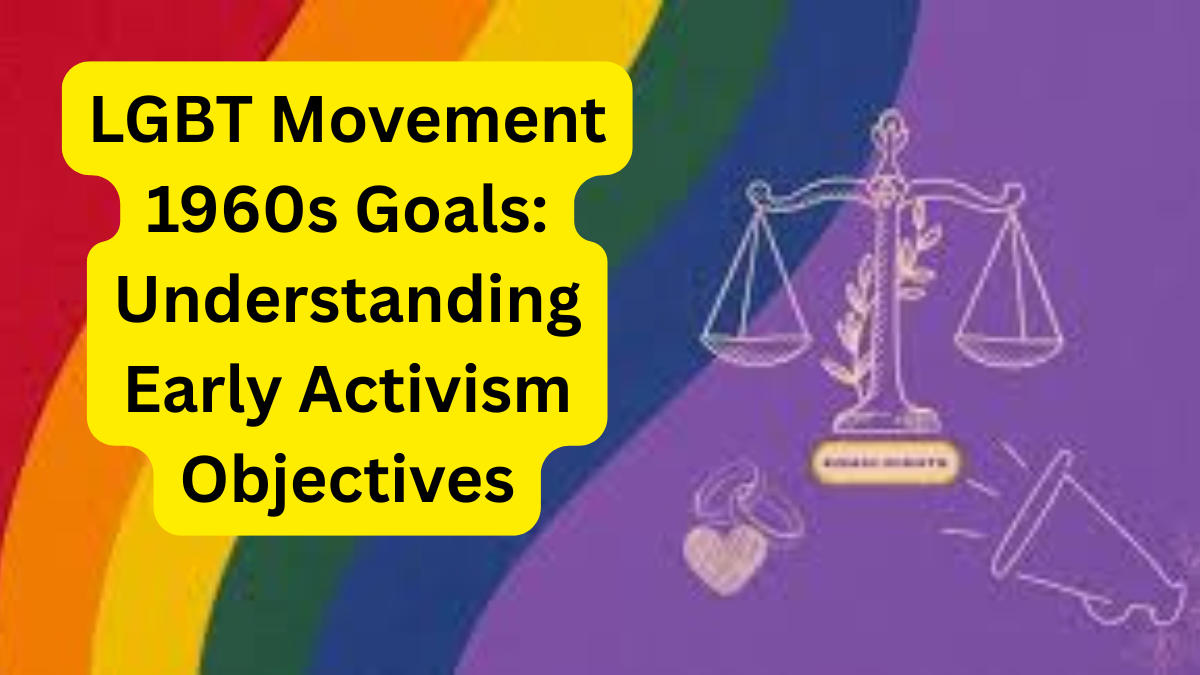The LGBT movement’s goals during the 1960s focused primarily on basic human rights, legal protections, and social acceptance at a time when same-sex relationships were criminalized nationwide and discrimination was widespread. This comprehensive analysis examines the specific objectives, strategies, and challenges of pre-Stonewall activism, providing crucial context for understanding the movement’s evolution and the courageous work of early organizers who laid the foundation for future progress.
Primary Objectives of 1960s LGBT Activism
The movement’s goals reflected the urgent needs of a community facing systematic persecution and legal discrimination during this transformative decade.
Legal Reform and Decriminalization
- Repeal of Sodomy Laws: Primary focus on eliminating state laws criminalizing consensual same-sex relationships
- Police Brutality Reduction: Ending entrapment practices and harassment by law enforcement
- Employment Protection: Securing basic job security for LGBTQ individuals facing automatic termination
Social Acceptance and Visibility
- Public Education: Challenging psychiatric classification of homosexuality as mental illness
- Media Representation: Seeking fair and accurate portrayal in newspapers and emerging television media
- Community Building: Creating safe spaces and support networks for isolated individuals
Key Organizations and Their Specific Goals
Different groups pursued complementary but distinct approaches to achieving movement objectives.
The Mattachine Society (1950-1960s)
- Assimilation Strategy: Promoting respectability through professional appearance and behavior
- Educational Outreach: Providing scientific information countering stereotypes
- Legal Challenges: Supporting court cases testing anti-sodomy laws
Daughters of Bilitis (1955-1970s)
- Women’s Focus: Addressing specific issues facing lesbians
- Private Social Spaces: Creating alternatives to bar culture
- Publications: Producing “The Ladder” as educational tool and community connector
Other Influential Groups
- Janus Society: Focused on legal reform through test cases
- East Coast Homophile Organizations: Regional coordination of activism
- Early Transgender Groups: Limited but emerging advocacy efforts
1960s Movement Goals and Achievements
| Goal Category | Specific Objectives | Notable Progress | Major Challenges |
|---|---|---|---|
| Legal Reform | Decriminalization | Illinois success (1961) | Widespread opposition |
| Social Acceptance | Medical declassification | Early research advances | APA maintained diagnosis |
| Public Visibility | Media representation | Few sympathetic articles | Mainstream condemnation |
| Community Building | Safe spaces | Private social events | Police raids continued |
Strategies and Tactics for Achieving Goals
Early activists developed innovative approaches within severe constraints.
Educational and Diplomatic Methods
- Picket Protests: Well-dressed, silent demonstrations at government buildings
- Conference Participation: Engaging medical and legal professionals
- Publications: Distributing newsletters and educational materials
Legal and Political Approaches
- Test Cases: Challenging laws through strategic litigation
- Lobbying Efforts: Meeting with sympathetic politicians
- Police Dialogue: Attempting to negotiate with law enforcement
Historical Context and Challenges
Understanding the era’s social climate is essential for appreciating movement goals.
Political and Social Climate
- Cold War Context: Homosexuality linked to communist threats in government rhetoric
- Medical Classification: Universal diagnosis as mental disorder
- Religious Opposition: Near-universal condemnation from religious institutions
Internal Movement Debates
- Assimilation vs. Liberation: Respectability politics versus radical acceptance
- Gender Norms: Reinforcement of traditional presentations within some groups
- Racial and Class Limitations: Predominantly white, middle-class leadership
How to Research 1960s Movement History
Step 1: Access Primary Sources
- Review organizational newsletters and publications
- Study personal papers of key activists
- Examine court documents from test cases
Step 2: Consult Academic Research
- Read scholarly histories of pre-Stonewall activism
- Review oral history collections from participants
- Analyze sociological studies from the period
Step 3: Understand Historical Context
- Research contemporary medical understanding
- Examine legal landscape of the 1960s
- Study social attitudes through period media
Frequently Asked Questions
Q1: Were the 1960s movement goals achieved?
A: Partially. Decriminalization began but wasn’t completed nationwide until 2003. Social acceptance goals saw limited progress until after Stonewall.
Q2: Why did groups focus on respectability politics?
A: Given the extreme discrimination, many believed presenting as “normal” and professional was the only way to gain mainstream acceptance.
Q3: How were transgender issues addressed?
A: Very limited inclusion, with most focus on sexual orientation. Some early transgender activists participated but faced additional marginalization.
Q4: What was the significance of the 1960s for later movements?
A: The decade established organizing principles, identified key issues, and created networks that would fuel post-Stonewall activism.
Q5: How successful were educational efforts?
A: Moderately successful in reaching sympathetic professionals but limited impact on general public attitudes during the 1960s.
Preserving and Learning from Movement History
Research Resources:
- ONE Archives at USC: Largest LGBTQ collection including 1960s materials
- New York Public Library LGBT Collections: Extensive historical documents
- GLBT Historical Society: Pre-Stonewall movement artifacts
Educational Opportunities:
- University LGBTQ history courses
- Local historical society exhibitions
- Documentary films on early movement
Contact Information:
- ONE Archives: one@usc.edu
- GLBT Historical Society: info@glbthistory.org
- Lambda Legal: https://www.lambdalegal.org/
